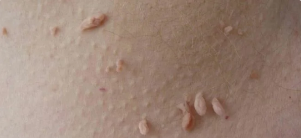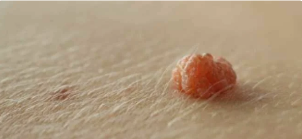
The human papilloma virus (HPV) – a common name of a group of viruses causing various diseases. Known more than 100 types. The pathogen spread throughout the world. To avoid infection, it is important to know how is the human papilloma virus.
What is the HPV infection?
The infection by HPV – a group of viral diseases caused by the human papilloma virus. Of time, study, describe, above 100 types of viruses. For a long time scientists have studied the morphology of the pathogen, which allows you to determine what types of viruses that cause disease. Were identified separately, the group of HPV high-risk of cancer.
Due to the fact that the HPV predominantly affects the reproductive system, a considerable attention to the study of the problem given the twentieth century. Talking about what is the HPV in gynecology, it should be noted the high risk of developing cancer of the cervix. The Experts found that the virus directly, rather, the 16-th and 18-th types of cause the development of cancer process in the reproductive system female.
HPV transmission and infection
HPV is known for its resistance to environmental factors, so long time can keep the activity on the environment. This explains the ability of a pathogen to widespread. However, direct transmission of HPV by droplets does not occur. Speaking of how is HPV transmitted from person to person doctors point to the obligatory presence of a direct contact with the skin and mucous membranes of the membrane of a carrier of the virus.
The form of transmission of HPV varied:
- sexual;
- contact-home;
- vertical.
The most common form of transmission of HPV

Listen for the first time on this type of pathogen, patients often ask the doctor: is passed if the human papillomavirus sexually transmitted diseases. The doctors say that this method is the most common. According to statistics, approximately 70% of the people sexually active are carriers of HPV. The infection can occur repeatedly throughout life.
The majority of women and men are infected with HPV after a few months from the beginning of the sexual life active. It should be noted that HPV is often attributed to sexually transmitted infections, but the infection is possible during sexual intercourse without penetration. Contact with the genitals of the virus may lead to infection.
Doctors call and the following forms of transmission of HPV:
- when the kiss;
- during the oral sex.
HPV infections in the home
Some infectious diseases specialists assign household transmission of HPV. The percentage distribution of the virus in this way is small, however, we cannot completely exclude this possibility. The virus can remain active, hitting the pool, the shower, so that the infection is possible in public areas.
The infestation in the home takes place through kissing, use of personal care products infected with the HPV. In these cases, increase the risk of infection:
- the weakening of the immune system;
- violation of the rules of personal hygiene.
The risk of HPV infection
The probability of HPV infection increases sharply with the beginning of the sexual life. This transfer path is considered as the main. Therefore, the specialists identified a number of factors, the presence of which is several times increases the risk of infection:
- early sexual debut;
- frequent change of sexual partners;
- the neglect of contraceptives.
It is separately necessary to tell about the possibility of an infection in childhood. In the majority of cases, HPV is transmitted from the mother during the birth. When the promotion through the birth canal infection occurs in the baby. Children are easier to tolerate the infection, you have it almost does not occur. In addition, with the arrival together with the mother's milk ready-made antibodies observed a healing spontaneous.
How is the HPV infection?
HPV infection occurs by direct contact of mucous membranes, skin and genitals. During intercourse often have microcracks and damage to the mucous membranes, which only increases the risk of HPV infection. Although there are some differences in the mechanisms of transmission of the virus in women and men.
How is the human papilloma virus in men?

The probability of HPV infection in men is directly dependent on the number of permanent sexual partners. Frequent promiscuity in several times to increase the chance of infection. In this case the man in the majority of cases not aware of the presence of the virus HPV in the body. The result is the spread of the virus. 90% of sex occurs the infection of the couple, which previously was completely healthy.
As the wife of a human papilloma virus?
Forms of HPV infection in women do not differ in the characteristics of men. In the first place is sexual. However, the risk of infection in women and the increase of some factors.
Among the gynecologists provide:
- early sexual debut;
- frequent change of sexual partners;
- abortion;
- the traumatic part in anamnesis;
- gynecological diseases;
- stress;
- long-term use of oral contraceptives.
Transferred baby the human papilloma virus?
To know the presence of HPV in the body of women planning pregnancy in the near future, one wonders if the transmitted human papilloma virus from the mother to the baby. Experts say the risk of infecting the baby exists. However, children rarely have HPV, routes of infection, are different from those of adults. Transmission often occurs at the stage of promotion of the fetus through the birth canal: the virus of the membrane lining of the mother passes to the baby.
It is worth noting that the danger of this kind of infection is low. In the majority of cases, the child of the body manages to get rid of the HPV in the first 2-3 months of life. This happens due to the receipt in the body of the infant antibodies from the milk of the mother. The main danger of HPV in children are respiratory tract lesions – appearance of polyps. These cases are rare and are treated more as exceptions.
HPV how long after exposure?
Learning about how is human papilloma virus, many patients are interested in the time of the first symptoms. The doctors can't say how quickly it manifests itself after the HPV infection.
Very important are the following factors:
- the age of the patient;
- the presence of chronic inflammatory processes in the body;
- the state of the immune system.
In practice, the terms clinical manifestations of HPV are different. The appearance of warts, changes in the cells affected, may be observed after a few weeks or months. In some cases first lesions on the skin in the groin area and genitals are detected a year later, after being run over by a papilloma virus in the body. To determine the exact time of getting HPV in the organism is possible on the basis of the laboratory tests.
Signs of HPV infection
The symptoms of the HPV infection will produce lesions of the genitals. In the majority of cases, the virus causes characteristic skin lesions. Patients record the vulgar appearance of papillomas and genital warts. Externally, these growths resemble a cauliflower, to confuse them with the rest of the skin manifestations is difficult.
In women papillary growths of pale pink color localized:
- in the area of the labia minora;
- in the groin;
- in the clitoris;
- near the external opening of the urethra;
- on the eve of the vagina.
In some cases, warts are formed on the anus, if the woman is into anal sex. The strong growth of this type of training leads to bleeding, pain during sexual intercourse. Men such as education are located in the pubic area, the crotch, at least on the surface of the penis.
Vaccination against HPV after infection
Even for those who know, how is the human papilloma virus, which is not always possible to avoid infection. After rehabilitation treatment, to prevent HPV infection, to prevent the development of relapses, the doctors carried out the vaccination against the human papillomavirus. Vaccines prevent the development of viral infection 15 years or more.














































































